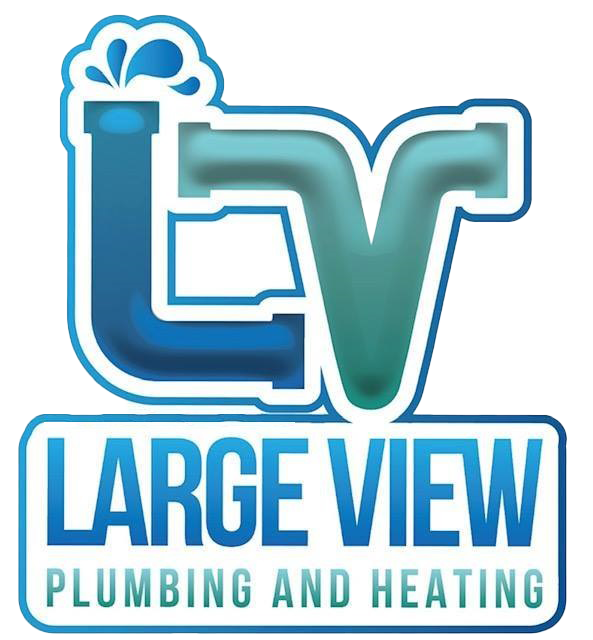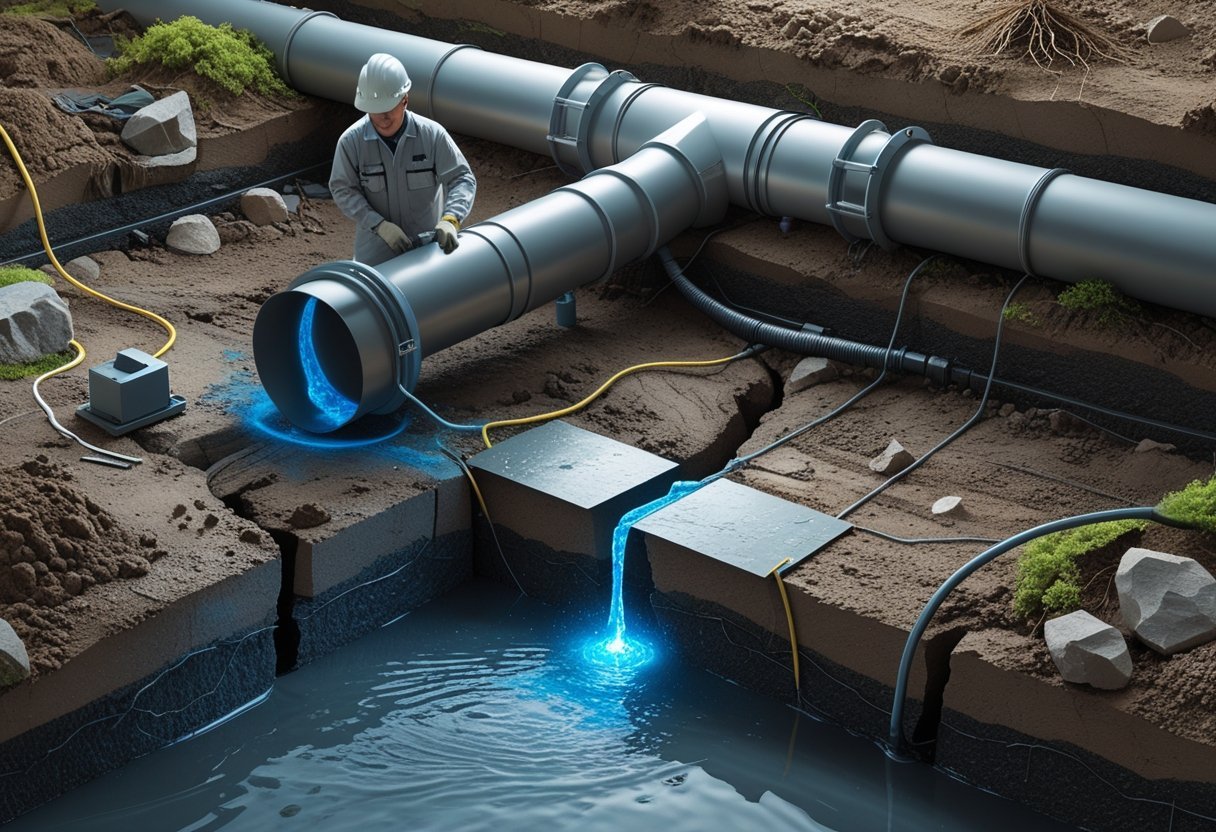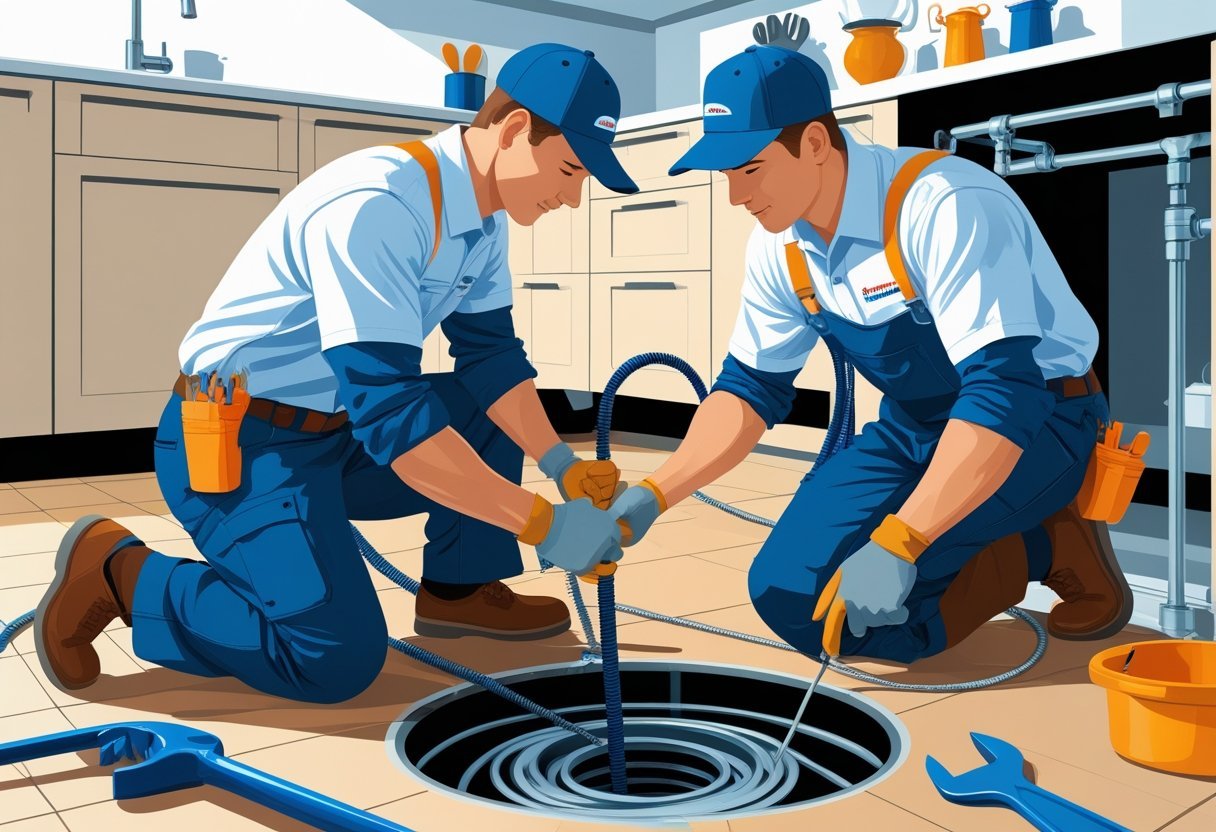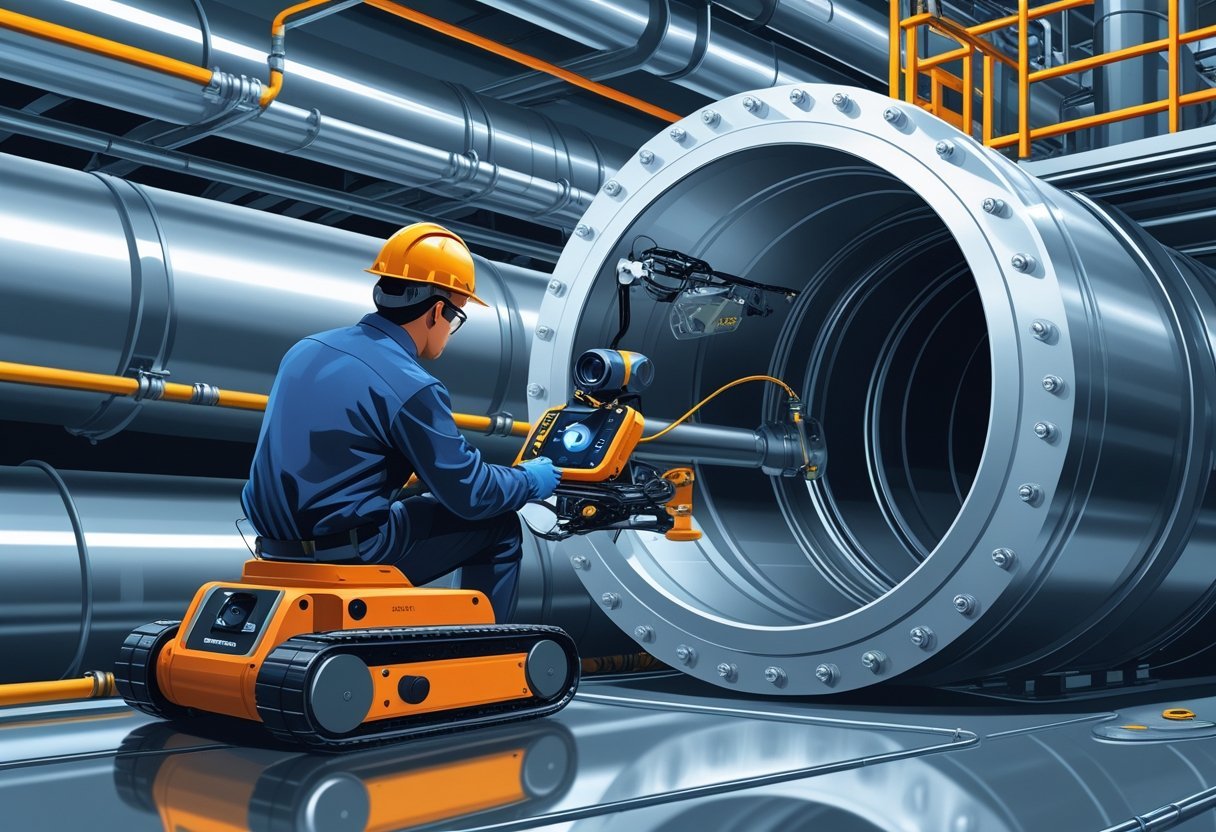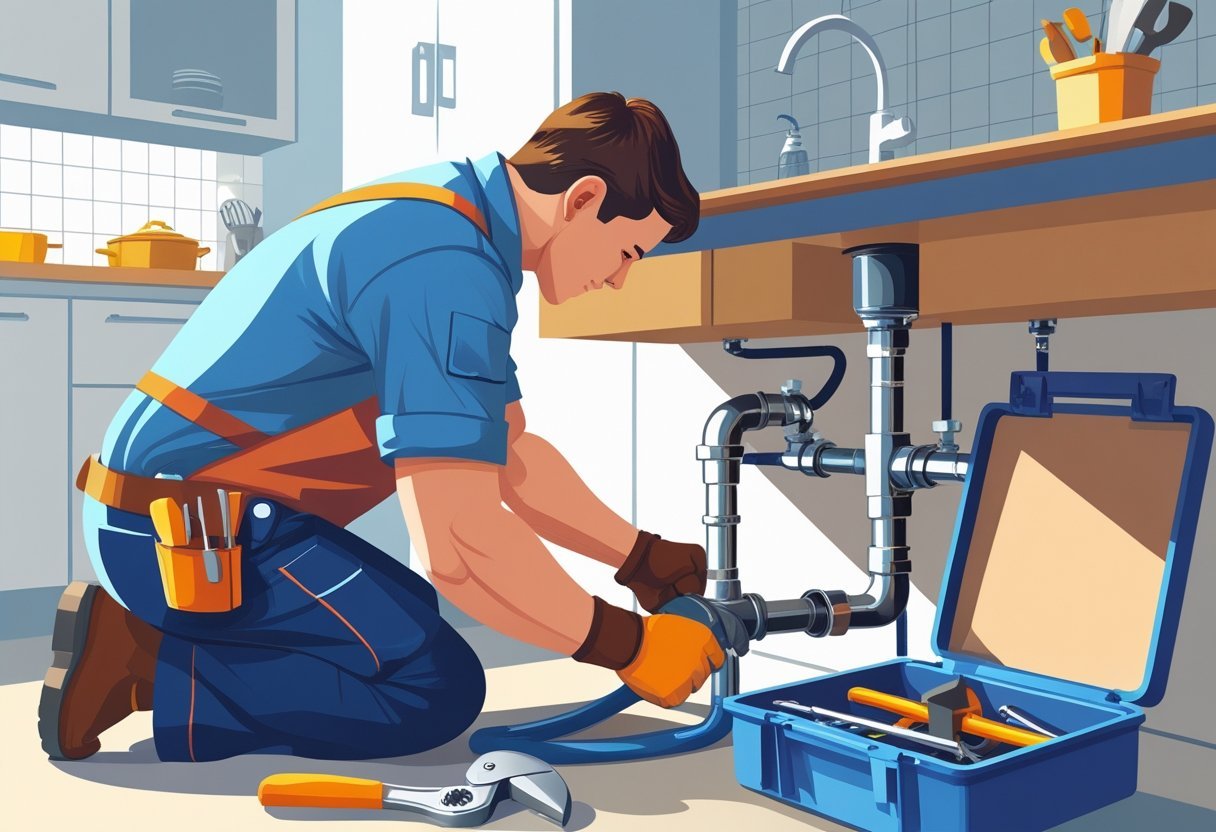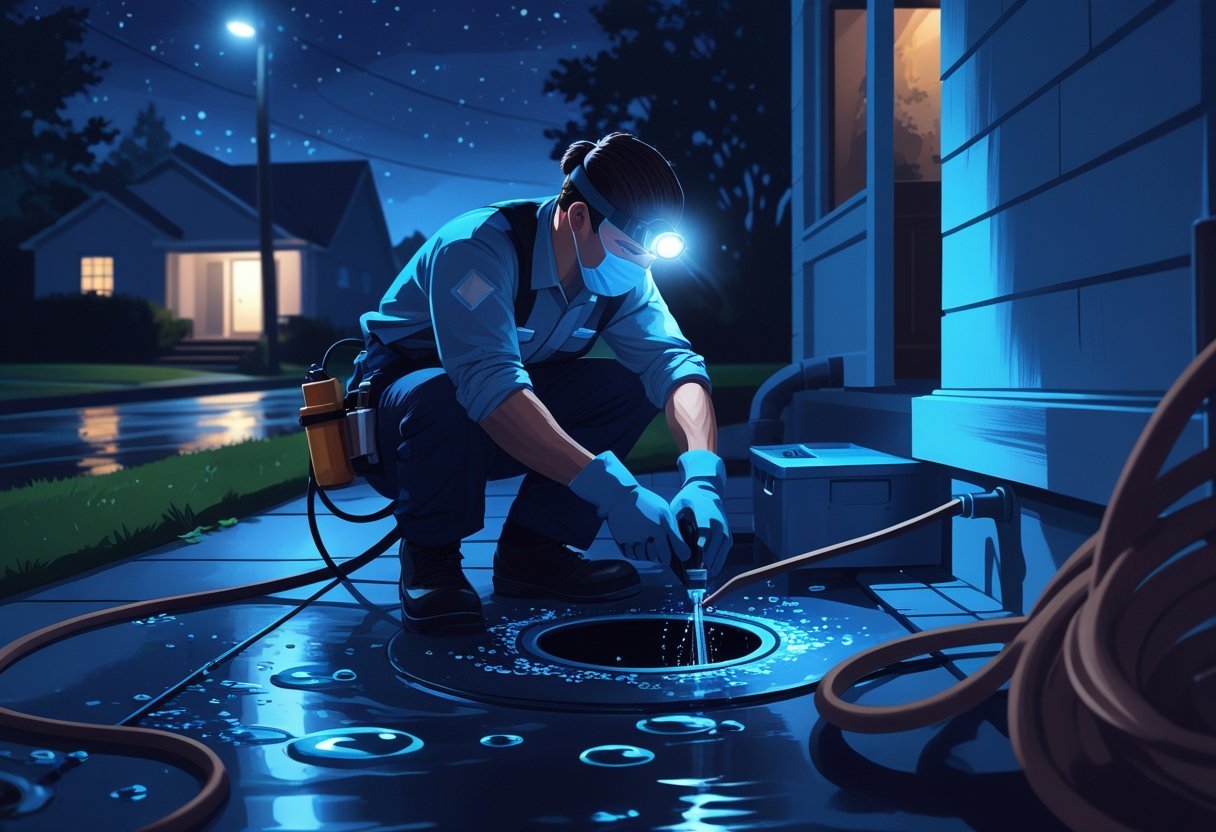Leaks in your plumbing can lead to significant damage and costly repairs if not identified and addressed promptly. Effective leak detection is essential for maintaining the integrity of your home and preventing future issues. Through advanced technology and skilled assessment, you can ensure that any leaks are found and repaired before they escalate.
At Large View Plumbing & Heating, we understand the complexities involved in leak detection. With over 10 years of experience, our team is equipped with the latest tools and techniques to identify leaks quickly and accurately. Whether you are facing minor drips or potential flooding, our commitment to quality service ensures that you receive the best possible care tailored to your needs.
By prioritizing proactive management of any plumbing issues, you can save yourself time and money down the line. Trust Large View Plumbing & Heating to provide reliable solutions that keep your plumbing system functional and efficient. When leaks are detected early, you can safeguard your property and maintain peace of mind.
Understanding Leak Detection
Leak detection is a crucial process for identifying leaks in various systems, including pipelines and plumbing. Recognizing leaks early can save you from costly repairs and damage. This section covers key definitions, different types of leaks, and common causes to enhance your understanding.
Definition and Importance
Leak detection refers to methods and technologies used to identify leaks in systems that transport liquids or gases. These systems may include pipelines, plumbing fixtures, and water distribution networks.
The significance of leak detection lies in preventing water loss, property damage, and potential hazards. Effective detection helps maintain system integrity and ensures safety. By utilizing advanced techniques and tools, you can promptly address leaks and safeguard your property from more significant issues.
Types of Leaks
Leaks can occur in various forms, including:
- Surface Leaks: Visible leaks on the surface of pipes or fixtures.
- Subsurface Leaks: Hidden leaks occurring underground, often undetectable without specialized equipment.
- Pressurized System Leaks: Occurrences in gas or water pressurized systems, which may require acoustic detection tools.
Each type of leak demands specific detection methods. For instance, large-scale systems might use sensors and monitoring software, while homes may benefit from simpler moisture detection devices. Companies like Large View Plumbing & Heating utilize modern techniques to ensure accurate detection.
Common Causes of Leaks
Leaks often arise from several common causes. These include:
- Corrosion: Aging pipes and fixtures can corrode over time, leading to structural failure.
- Temperature Changes: Fluctuating temperatures can cause materials to expand and contract, creating gaps.
- Poor Installation: Improperly installed systems can be prone to leaks, particularly in high-stress areas.
- Ground Movement: Shifts in the ground due to erosion or natural settling can damage pipelines.
Being aware of these causes can help you take preventative measures. Regular maintenance and inspections by professionals, such as those from Large View Plumbing & Heating, can significantly reduce the risk of leaks.
Methods and Technologies for Leak Detection
Detecting leaks effectively is crucial for preventing damage and maintaining system efficiency. Various methods and technologies are available to identify leaks, each with unique benefits and applications.
Non-Invasive Leak Detection Techniques
Non-invasive leak detection techniques have gained popularity due to their ability to locate leaks without causing damage to surrounding infrastructure. These methods often utilize advanced technology such as thermal imaging and moisture sensing.
Thermal Imaging: This technique involves using infrared cameras to detect temperature changes caused by leaks. Warm or cool spots on a surface indicate potential leaks, allowing targeted investigation.
Moisture Meters: These devices measure moisture levels in walls or floors, helping identify hidden leaks behind surfaces. They are particularly useful for detecting leaks in residential plumbing systems.
Drones and Aerial Imaging: Drones equipped with thermal and visual cameras can cover large areas quickly, making them ideal for inspecting difficult-to-reach locations like roofs and pipelines.
Utilizing these non-invasive methods, companies like Large View Plumbing & Heating can efficiently pinpoint leaks, reducing repair costs and time.
Acoustic Leak Detection
Acoustic leak detection relies on sound waves to identify leaks in pipelines. This technique is effective for both pressurized and non-pressurized systems.
Ultrasonic Detectors: These devices capture high-frequency sounds produced by leaks. They can discern the distinct noise created by water escaping a pipe, allowing for quick identification.
Acoustic Sensors: These sensors can be placed along pipelines to monitor sound levels continuously. Irregularities in noise patterns often signal leaks, enabling proactive maintenance before costly failures occur.
Ground Penetrating Radar (GPR): GPR technology uses radar pulses to image the subsurface, helping locate buried pipelines. It can identify changes in the ground structure that may indicate leaks.
Choosing reliable methods, like those offered by Large View Plumbing & Heating, harnesses these innovative technologies to ensure your systems remain leak-free and efficient.
Detecting Water Leaks
Identifying water leaks promptly is essential to prevent extensive damage and costly repairs. Recognizing the signs of leaks and understanding their potential impacts can help you act quickly. Here are key details to consider.
Signs of Water Leaks
Several indicators can suggest the presence of a water leak in your home. Look for the following signs:
- Water Stains: Brown or yellow stains on ceilings, walls, or floors can indicate water pooling behind surfaces.
- Increased Water Bills: A sudden spike in your water bill, despite no changes in usage, may imply a hidden leak.
- Mold Growth: Dampness from leaks promotes mold and mildew growth, often visible in corners or around fixtures.
- Unexpected Sounds: Listen for dripping or running water sounds when faucets are off, as it may signal a leak.
If you notice any of these signs, consulting a professional such as Large View Plumbing & Heating can help in locating and addressing the issue efficiently.
Impact of Undetected Water Leaks
Failing to detect water leaks can lead to significant problems over time. Consider the potential consequences:
- Structural Damage: Continuous exposure to moisture can weaken walls, floors, and foundations, resulting in costly repairs.
- Mold and Mildew: A persistent leak can lead to mold growth, which poses health risks and may require extensive remediation.
- Increased Water Costs: Even minor, unnoticed leaks can accumulate, leading to higher water bills.
- Damage to Personal Property: Water can damage your belongings, including electronics and furniture, resulting in unexpected replacement costs.
Addressing any suspected leaks is crucial. A trusted service like Large View Plumbing & Heating can provide the expertise necessary to diagnose and resolve issues quickly, saving you time and money in the long run.
Leak Detection in Metal Pipes
Detecting leaks in metal pipes is crucial due to the potential for significant water loss and structural damage. Various challenges arise from the materials and conditions of the pipes, while specific equipment can enhance detection capabilities.
Challenges with Metal Pipes
Metal pipes, often used in plumbing and industrial applications, face unique challenges during leak detection. Corrosion is a common issue; it can create pinholes that lead to slow leaks, making them harder to identify. In addition, the metallic structure may obstruct electromagnetic signals used in some detection technologies.
External factors such as ground movement or temperature fluctuations can exacerbate these problems, leading to unexpected leaks. You might also encounter difficulty in accessing certain pipe sections due to their installation location.
When dealing with these challenges, a company like Large View Plumbing & Heating can provide the expertise needed to locate and fix leaks before they escalate into more severe problems.
Equipment for Metal Pipe Leak Detection
To effectively detect leaks in metal pipes, several specialized tools and technologies are employed. Acoustic leak detectors utilize sound to identify leaks, allowing accurate pinpointing of the location. These devices listen for the noise generated by escaping water.
Infrared cameras can also be effective, detecting temperature differences around leaks, especially when combined with thermal imaging techniques. Another method is pressure testing, which assesses the integrity of the piping system by monitoring pressure changes.
For more advanced detection, companies may use hydrogen tracer gas systems, which are especially effective in finding leaks in metal infrastructure. With the help of professionals, such as those at Large View Plumbing & Heating, you can ensure that the right equipment is used for efficient and reliable leak detection.
Prevention and Maintenance Strategies
Effective prevention and maintenance are vital to minimize leaks and ensure your plumbing systems function efficiently. Regularly inspecting your equipment and following best practices can save you time, money, and hassle.
Regular Inspection Routines
Establishing a routine inspection schedule is essential for early leak detection. Examine your plumbing systems at least twice a year. Focus on high-risk areas like under sinks, around toilets, and near water heaters.
When inspecting, look for signs of corrosion, rust, and moisture. Check joints, seals, and hoses for wear and tear. Additionally, ensure appliances like washing machines and dishwashers are functioning properly.
Engaging professionals like Large View Plumbing & Heating for comprehensive inspections can greatly enhance your maintenance efforts. They can identify potential issues before they escalate, providing peace of mind.
Best Practices for Leak Prevention
Implementing best practices for leak prevention protects both your property and your peace of mind. Start by regularly maintaining your equipment and installing high-quality fixtures. Using water-efficient appliances can reduce wear over time.
Another crucial step is keeping an eye on your water pressure. Excessively high pressure can lead to leaks. Use a pressure gauge to monitor levels, adjusting as necessary.
Consider investing in smart leak detection systems that alert you to leaks in real-time. These systems can significantly reduce water loss and minimize repair costs. Large View Plumbing & Heating can recommend and install the latest technologies for optimal effectiveness.
Frequently Asked Questions
Leak detection is a crucial aspect of maintaining the integrity of your plumbing systems. Understanding the common methods, costs, and technologies involved can help you make informed decisions about your home or pool.
How can a leak be detected in residential plumbing systems?
Detecting leaks in residential plumbing often starts with a visual inspection. Check areas under sinks, around toilets, and near appliances for signs of moisture. Tools like moisture meters or infrared cameras can also assist in locating hidden leaks.
What are the common methods used for detecting leaks in pools?
For pools, common leak detection methods include dye testing and pressure testing. Dye testing involves introducing colored dye into the water to see if it escapes from any cracks. Pressure testing checks the integrity of the plumbing by monitoring pressure levels to identify inconsistencies.
What factors affect the cost of professional leak detection services?
The cost for professional leak detection services varies based on factors such as location, type of leak, and complexity of access. Additional fees may arise from the need for advanced technology or repair services once a leak is found.
Can water leak detectors effectively prevent major water damage?
Yes, water leak detectors are designed to alert you at the first sign of moisture, which can help prevent significant water damage. By placing these devices in key areas, you can quickly address leaks before they escalate into larger issues.
How does electronic leak detection work for underground water systems?
Electronic leak detection utilizes sensitive equipment to identify leaks in underground systems by monitoring sound waves and pressure changes. This method is effective for pinpointing leaks without invasive excavation, saving time and resources.
What are the benefits of using professional leak detection over DIY methods?
Choosing professional leak detection services provides expertise and technology that most DIY efforts lack. Professionals, like those at Large View Plumbing & Heating, have access to advanced tools and techniques, ensuring leaks are identified accurately and efficiently while reducing the risk of further damage.
